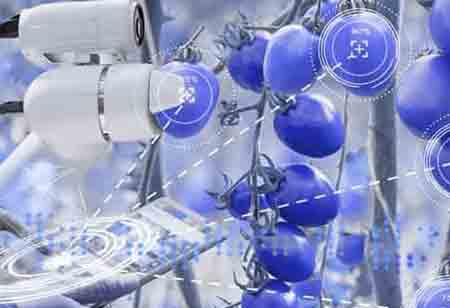Thank you for Subscribing to Agri Business Review Weekly Brief
How is Precision Agriculture Monitored? What Types of Sensors are Used?
Precision agriculture sensors are aiding the agriculture industry by sending information that enables farmers to better understand their goods, keep up with changes in the field and environment, and monitor their operations.

By
Agri Business Review | Wednesday, April 12, 2023
Stay ahead of the industry with exclusive feature stories on the top companies, expert insights and the latest news delivered straight to your inbox. Subscribe today.
Temperature sensors are essential in two crucial areas of smart agriculture. These two areas are ambient condition monitoring and mechanical asset monitoring.
Fremont, CA: The rapid expansion of the global population, climate change, a decrease in annual rainfall, and increased demand for food due to the enormous number of people worldwide are all issues that significantly influence how farming is done. Regular cultivation practices suffer from these difficulties.
Precision agriculture sensors are aiding the agriculture industry by sending information that enables farmers to better understand their goods, keep up with changes in the field and environment, and monitor their operations. By recognizing, detecting, and tracking herds, intelligent agricultural sensors make it simple to identify animals, sense heat, and assess their health. This aids in cow isolation and recovery. Thanks to smart sensors in agriculture, farmers can now record the growth of the crops, monitor their efficacy from a distance, deal with agricultural pests, and respond quickly to safeguard their crops from environmental risks.
The rapid increase in the global population has increased farming operations' complexity, competition, size, and efficiency. Farming operations have increased productivity due to technology applications that have improved crop yields and product quality. In this technological breakthrough, sensors have become essential. Types of sensors that are being used in precision agriculture are listed below:
GPS Sensors
GPS sensors are used in automobiles and cellular communication systems. They have several benefits for intelligent agriculture. Ancient settlers faced several difficulties, including the need to drive their cattle with wooden staffs and the difficulty of herding sheep. This is so farmers can keep tabs on their flocks, which is important. With modern GPS, tracking livestock is no longer challenging because it has been enhanced to allow for easy animal monitoring.
GPS sensors have been embraced for extremely accurate vehicle guiding systems for agriculture. This includes plant harvesting and associated agricultural practices. Using auto-guided techniques may improve field routing, decrease overlapping operations, and ultimately minimize the time needed to perform a task in various agricultural applications, such as tilling a field.
Agricultural Temperature Sensors
Temperature sensors are essential in two crucial areas of smart agriculture. Ambient condition monitoring and mechanical asset monitoring fall under these categories. For instance, ice wine harvesting often occurs within a constrained temperature window during a harvesting season. This is when temperatures initially fall between -10°C and -12°C.
The ice wine business needs a temperature and humidity sensor that is highly accurate in order to provide the most precise estimate of the temperature forecast. Temperature sensors are essential in almost all applications for monitoring smart agriculture assets and physical space ambient conditions.
Asset Monitoring
This is yet another instance of smart agriculture using temperature sensors for evaluation. Temperature sensors monitor the machinery that collects the plants and harvests them. The temperature sensor sends an alarm if an equipment system needs minor maintenance, works poorly, or is seriously failing. They are adept at almost everything related to proactive and reactive maintenance programs. In turn, this safeguards against device failure and overheating.
Accelerometer Sensor
This is quite comparable to the maintenance forecast method using temperature sensors. Accelerometers are widely used in the smart agricultural sector to forecast and facilitate necessary maintenance. They are mainly used on motors and moving parts. Their primary objective is to identify minute changes in movement and vibration irregularities. They predict when routine maintenance or a damaged component requires replacing. Accelerometers, however, serve a crucial role in the maintenance of essential smart agriculture equipment. This is despite being often linked with farming and other forms of agriculture. Automated systems and tracking techniques can also use accelerometers. A low-power accelerometer, for instance, makes it simpler and quicker to check the condition of a movable spray nozzle at the end of a fertilizing beam. To track motion, speed, crash events, and even position in space, autonomous drones used in smart agriculture heavily rely on accelerometers and IMUs (inertial measuring units).





